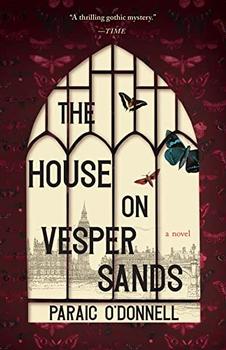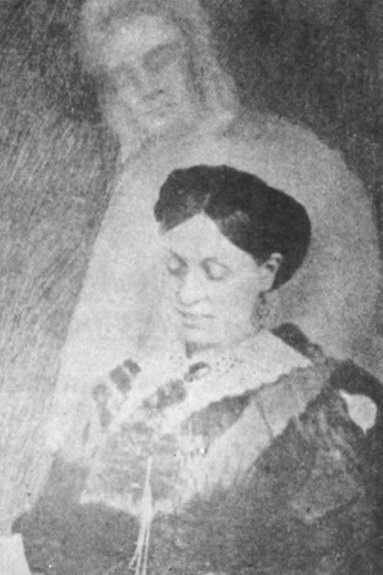Summary | Excerpt | Reading Guide | Reviews | Beyond the Book | Read-Alikes | Genres & Themes | Author Bio

This article relates to The House on Vesper Sands
 Though the movement of Spiritualism — the belief that the spirits of the dead are able to communicate with the living — was born in New York in 1848 with the Fox sisters, it quickly took hold of the Victorian imagination when it arrived in England in the mid-19th century. Maria Hayden, a famous American medium, arrived in the U.K. in the autumn of 1852. In the British press, Hayden was initially mocked and dismissed, but by the mid-1850s she was being visited by a number of influential clients who began to take her and her beliefs seriously. The press began covering the topic more favorably, and newspapers devoted explicitly to Spiritualism sprung up in London, including the British Spiritualist Telegraph and the Spiritual Times.
Though the movement of Spiritualism — the belief that the spirits of the dead are able to communicate with the living — was born in New York in 1848 with the Fox sisters, it quickly took hold of the Victorian imagination when it arrived in England in the mid-19th century. Maria Hayden, a famous American medium, arrived in the U.K. in the autumn of 1852. In the British press, Hayden was initially mocked and dismissed, but by the mid-1850s she was being visited by a number of influential clients who began to take her and her beliefs seriously. The press began covering the topic more favorably, and newspapers devoted explicitly to Spiritualism sprung up in London, including the British Spiritualist Telegraph and the Spiritual Times.
By 1860, the Spiritualist movement had gathered significant steam, and there were a number of local mediums practicing. These human conduits between the living and the dead would host séances that would be attended by members of the public. They were typically performed in darkness, and attendants would join hands to supposedly conduct the flow of energy in the room. Mediums had different methods of communicating with the dead — sometimes the spirits would convey their messages by having the medium write on a slate, and sometimes they would speak directly through the medium's mouth. Séance attendants experienced a number of other phenomena that might have hinted at a ghostly presence — sometimes they would feel vibrations or hear a musical instrument being played with no hands or feel raps on a table. Many of these sensations were proven to have been orchestrated by fraudulent mediums, some of whom were publicly debunked by the famous magician Harry Houdini, who had a distaste for Spiritualism and was part of a committee created by Scientific American magazine that promised a substantial reward to anyone who could prove they had paranormal powers.
The majority of mediums were women, as they were generally seen to be weaker in disposition and therefore more susceptible to the presence of spirits, and a great number of attendants were women as well. Queen Victoria herself participated in several séances with Prince Albert over the years, and after they each died, they allegedly communicated messages to living family members through mediums. Spiritualism in Victorian England had an almost proto-feminist appeal to many women: not only were they taken seriously in Spiritualist spaces, they were often revered on a higher level than their male counterparts. Famous female Spiritualists from the Victorian era include Annie Horniman (an actress-turned-Spiritualist who believed she could astral-project herself to Saturn), Emma Hardinge Britten (an advocate who wrote two foundational Spiritualist texts, Modern American Spiritualism and Nineteenth Century Miracles), and Florence Marryat (author of over 60 novels and several nonfiction works on Spiritualism).
While in northern England Spiritualism was particularly attractive to the working class, séances in London were primarily attended by the upper class. Many attendants and ultimate converts were scientists, but it also attracted many artists, writers and performers; Sherlock Holmes author Sir Arthur Conan Doyle was a famous believer. Spiritualism in London provides the backdrop to Paraic O'Donnell's second book (her first released in the United States), the neo-Victorian novel The House on Vesper Sands.
Spiritualist Emma Hardinge Britten, photographed by William Mumler, 1860. Mumler was a "spirit photographer" famous for these doctored images. His career ended when he was sued for fraud in 1869.
Filed under Cultural Curiosities
![]() This "beyond the book article" relates to The House on Vesper Sands. It originally ran in January 2021 and has been updated for the
January 2022 paperback edition.
Go to magazine.
This "beyond the book article" relates to The House on Vesper Sands. It originally ran in January 2021 and has been updated for the
January 2022 paperback edition.
Go to magazine.






Your guide toexceptional books
BookBrowse seeks out and recommends the best in contemporary fiction and nonfiction—books that not only engage and entertain but also deepen our understanding of ourselves and the world around us.